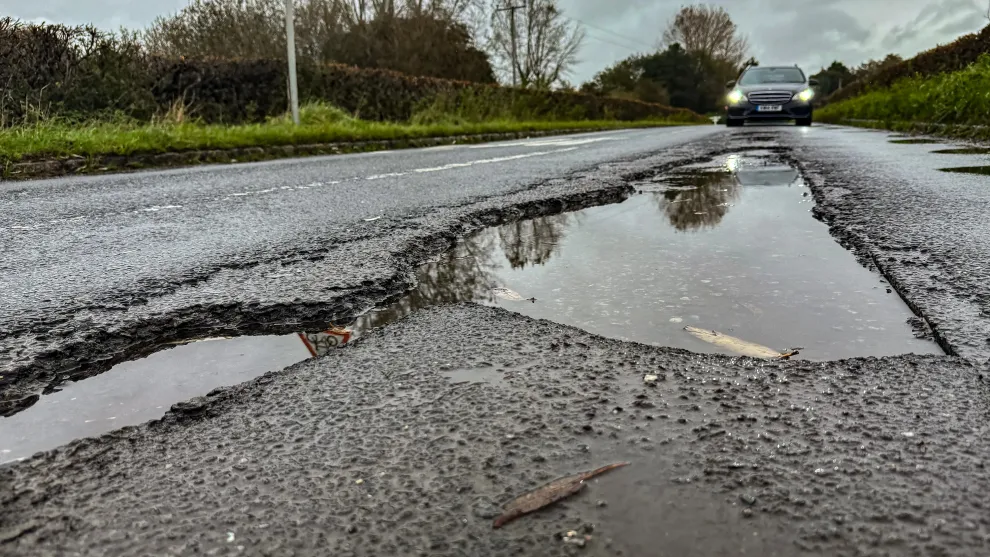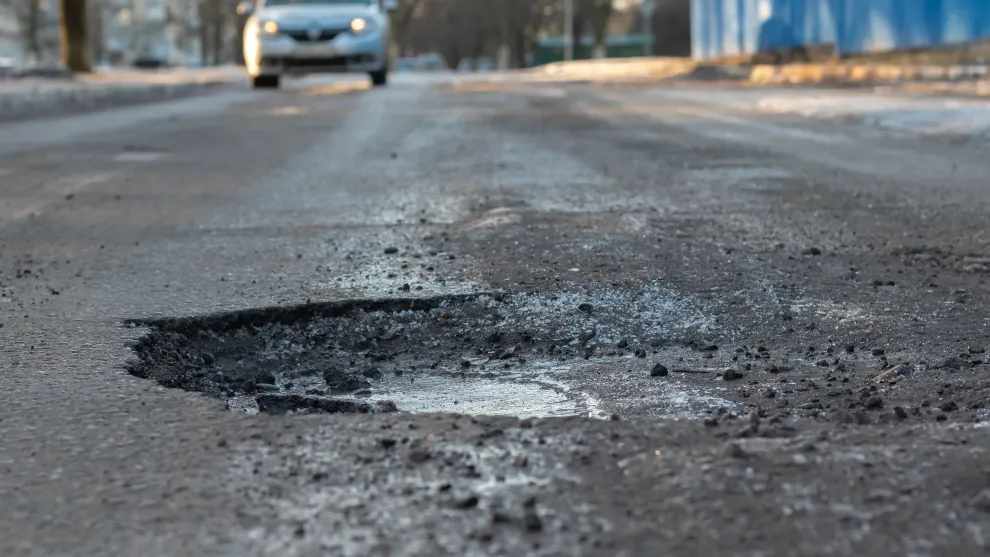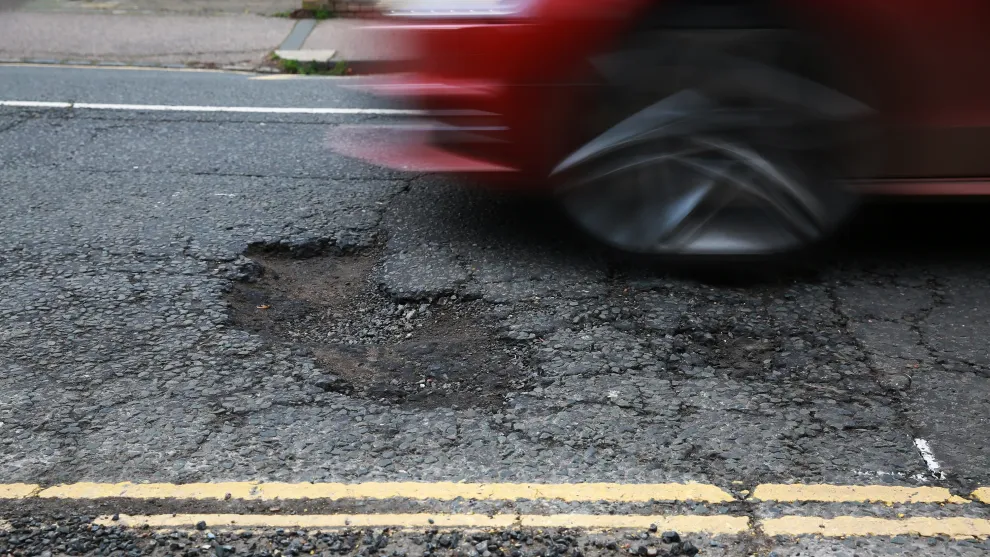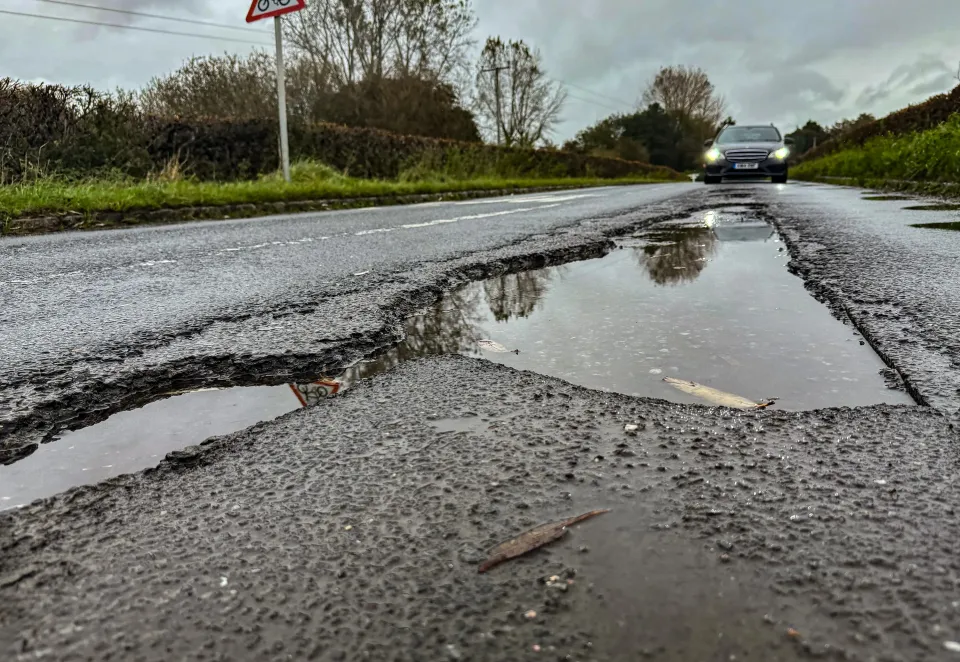How Do Potholes Form? Causes, Prevention & Repairs

What is a Pothole?
A pothole is a structural failure in a road surface, primarily caused by water infiltration. When moisture seeps into cracks and beneath the asphalt layer, it sets the stage for pavement failure. Left untreated, potholes pose safety hazards and increase long-term road maintenance costs.
How do Potholes form?
Potholes develop due to a combination of environmental and mechanical factors:
- Water Infiltration: Water penetrates surface cracks, accumulating beneath the asphalt.
- Freeze-Thaw Cycles: In cold conditions, trapped water freezes and expands, exerting pressure on the asphalt and weakening aggregate bonds.
- Traffic Stress: Vehicles passing over the weakened pavement exacerbate micro-cracking, accelerating road degradation.
- Void Formation: When temperatures rise, ice melts, leaving behind air pockets that compromise the pavement's integrity.
- Surface Collapse: Under repeated stress, unsupported asphalt gives way, forming a pothole. Left untreated, potholes worsen and increase maintenance costs.

Clearly defined section of road that's had asphalt scrapped from it's surface
How to prevent Potholes & reduce repair costs
While potholes are inevitable in aging infrastructure, strategic interventions can significantly reduce their formation and extend pavement lifespan.
Improve Material Quality
Using asphalt mixes with lower air void content minimises water infiltration, enhancing durability and reducing premature pavement failure.
Enhance Road Construction Techniques
Proper compaction maintains a dense, well-bonded asphalt layer that resists water penetration.
It’s also important to consider seams and construction joints, both of which are prime failure points. High-quality sealing techniques, or advanced joint sealing, prevent water ingress and reinforce pavement integrity.
Correctly Cut and Square the Edges
A common issue in road repairs is inadequate bonding. Cutting and squaring pothole edges creates a solid bonding surface, ensuring long-lasting repairs.
Improve Drainage
Water management is key to long-term road health. Where possible, incorporating high-performance drainage solutions, such as Super Drain, reduces water accumulation and prevents structural weakening.
What are the long-term benefits of proactive maintenance?
By prioritising high-quality materials, superior construction techniques, and effective drainage solutions, we can significantly reduce pothole formation. This approach leads to:
- Improved road safety: Smoother, hazard-free surfaces for drivers and pedestrians.
- Lower maintenance costs: Fewer repairs mean cost savings over time.
- Reduced street works: Minimal disruption and inconvenience.
- Extended infrastructure lifespan: Roads that withstand the elements and heavy traffic for longer periods.

How fewer repairs contribute to lower CO₂ emissions
Reducing the frequency of road repairs has a direct impact on lowering CO₂ emissions through:
- Fewer repair vehicles on the road: Road maintenance requires machinery like asphalt pavers and transport trucks, all running on diesel or fossil fuels. Less frequent repairs mean fewer trips for material transport, site prep, and clean-up, which reduces fuel consumption and emissions.
- Lower demand for asphalt production: Fewer repairs reduce the need for new asphalt, leading to lower emissions from the extraction, transportation, and manufacturing processes.
Investing in proactive road maintenance today means safer, more durable infrastructure for the future.

This machine is screening and sorting the recycled asphalt plannings by size
How to report a Pothole
Reporting a pothole is quick and easy, and it helps improve road safety for everyone. Here's how:
Use local council reporting tools: Most councils have online pothole reporting forms. Simply visit their website and fill in the details. For major roads, check if the road is managed by National Highways.
Provide key information: Include the location (street name, landmarks) and size of the pothole, and, if possible, upload a photo to make reporting easier.
Use the Government Portal: For potholes on national highways, report them through the official gov.uk website.
Stay updated: After reporting, keep track of the status. Some councils offer progress updates or reference numbers for follow-up.
Summary
Potholes are a major issue for roads across the country, affecting both safety and the economy. However, by understanding how potholes form, taking preventive measures, and reporting them quickly, we can ensure smoother, safer roads for all.
Don’t wait for the next pothole to become a problem. At Holcim, we’re committed to providing sustainable construction materials that help prevent road damage and promote long-lasting infrastructure.







